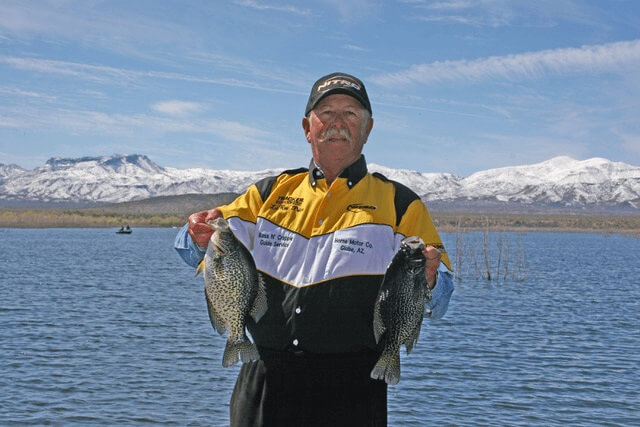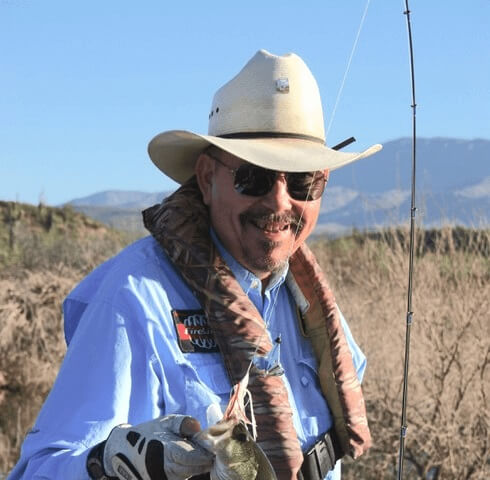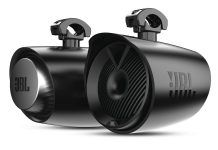Two Experts Offer Tips On Winter Crappie Fishing
Two of the acknowledged masters of crappie trolling in Arizona are Art Chamberlin and LeRoy Price. Both men fish for crappie and bass on Roosevelt Lake, and they spend so much time on the water that they can follow the fish around day by day.
In January, LeRoy starts out fishing near the main lake, in the Windy Hill area. One of the great things about trolling is that you are fishing while you’re looking around, so LeRoy rigs up a couple of rods and heads northeast.
His favorite crappie rods are Bass Pro Shops micro light spinning rods and he spools them up with 6-pound-test Suffix line. He generally keeps his jigs at about 15 feet, although he might be fishing over water that is quite a bit deeper than that.
Price Says The Fish Will Let You Know
 Getting and keeping your jigs at the right depth can be tricky. There are charts that help you figure out how much line to let out by using calculations based on the angle at the intersection of the line and the water, but that seems a bit complicated for a guy who just wants to put a couple of crappie in the boat.
Getting and keeping your jigs at the right depth can be tricky. There are charts that help you figure out how much line to let out by using calculations based on the angle at the intersection of the line and the water, but that seems a bit complicated for a guy who just wants to put a couple of crappie in the boat.
Leroy simply starts out with about 40 or 50 feet of line out and ties the jigs on about two feet apart. With two people (each with a 2-pole stamp) in the boat, you can run four rods at slightly different depths until the fish let you know what works best.
Price likes Kalin grubs in John Deere (green and yellow) and also black/blue/chartreuse. “January is a really good time of year for big crappie,” LeRoy says, “and for those I use a little bit bigger baits: 1/8-ounce jig heads and 3-inch grubs.” These slightly larger baits often produce quality fish. For quantities, he’ll use 1/16-ounce jigs and 2-inch grubs, but he still likes the same colors.
Chamberlin Uses Power Grubs
 Art Chamberlin uses a lot of chartreuse Power Grubs. He also rigs two jigs on each line, spaced about two feet apart. He’ll often start out trolling with two rods at one depth and two at another, which lets him cover a lot of territory until he discovers what the perfect depth is that day.
Art Chamberlin uses a lot of chartreuse Power Grubs. He also rigs two jigs on each line, spaced about two feet apart. He’ll often start out trolling with two rods at one depth and two at another, which lets him cover a lot of territory until he discovers what the perfect depth is that day.
Since the jigs are up off the bottom, any bump on the line will be a fish. As a rule of thumb, Chamberlin starts out in deeper water in December (35 to 40 feet) and gradually moves in to 18 to 25 foot depths by March. But, regardless of the depth of the water he is fishing, he generally keeps the jigs running between twelve and fifteen feet deep.
Art uses his GPS unit to keep his speed at about one mile per hour. LeRoy prefers .8 mph. “One mistake that beginners often make is taking their foot off the trolling motor when they hook a fish,” LeRoy says. “If you do that, the boat slows down or stops and your jigs fall to the bottom. If you keep going, there’s a chance you’ll hook into a couple more fish. Plus, letting your jigs drop to the bottom means you could get snagged.”
Keep Kids, Hyper Adults Happy
Putting a little crankbait on a spinning outfit lets a kid or a hyper adult stay happy. You can troll crankbaits, but you can also rig them up on a sort of Carolina rig which will keep them running deep. This is especially good when you have to fish from shore.Tie a swivel onto the end of your line, then add a leader. It can be hard to cast with a long leader, but you need a fairly long one because crappie feed up.
Tie a little crankbait to the end of the leader (start with about 4 to 5 feet), then sling it out and let it sink before you start cranking. A very small Rat-L-Trap or spoon can be fished from shore without a leader.
It takes patience to wait until it gets down deep enough before you start cranking, but a chrome Trap or spoon can catch a lot of fish. Although a lot of crappie anglers think that crankbaits are for spawning crappie, if you can get them deep enough, you can catch fish on them all year long.
Try Tips From Leroy And Art
If you’re fishing from a boat, make sure you keep an eye on the depthfinder. If you see crappie, determine how deep they are so you know where to put your bait. Crappie feed up, so it’s better to be a bit shallow rather than too deep. Remember that crappie don’t always look like a Christmas tree on the screen. Often they are just a bunch of streaks spread around.
They can also be hard to distinguish from a tree or bush if they are holding tight, so make sure to explore any of these that you come across. You don’t have to give up on crappie just because the weather turns cold. Try these tips from Leroy Price and Art Chamberlin to put some slabs in the freezer this winter.































